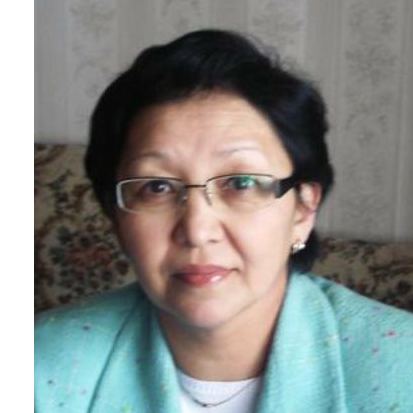THE USE OF ALTERNATIVE ENERGY SOURCES FOR THE OPERATION OF ENGINEERING SYSTEMS OF DETACHED CONSUMERS
DOI:
https://doi.org/10.31489/2023No2/46-56Keywords:
alternative energy sources, hydropower, heat, thermal refrigeration unit, temperature, heated mediumAbstract
The operation of many of the engineering systems that are necessary for the functioning of a detached residential building depends on specific sources of alternative energy, the use of which can significantly reduce the consumption of traditional fossil energy resources. A review of scientific works devoted to the operation of engineering systems using alternative energy sources is given. Several schemes of power equipment have been developed to obtain thermal and electrical energy supplied to isolated consumers. When designing a fixed technical solar system using solar radiation for operation, the locations of all power equipment, the solar receiver pitch on the roof of the building and the values of its optimal angle of inclination to the horizon were determined. A scheme of a small transportable hydroelectric power plant has been developed, which generates electric energy using the pressure created by the flow of water. A thermal refrigeration unit is designed, which uses the heat of the air removed from the animal stall to heat the heated medium.
References
Berkovsky B.M. Renewable energy sources at the service of man, Moscow, Science Publ. 1987, 125 p. [in Russian]
Deliagin G.I. Heat generating installations, Moscow, Stroyizdat Publ. 1986, 559 p. [in Russian]
Building regulations 2.01.01 – 82. Building climatology and geophysics, Moscow. 1996, 140 p. [in Russian]
Troiskiy A.A. Technical progress of the energy USSR, Moscow, Energoatomizdat Publ., 1986. – 221 p.
Kabeel A.E., Khalil A., Elsayed S.S., Alatyar A.M. Modified mathematical model for evaluating the performance of water-in-glass evacuated tube solar collector considering tube shading effect. Energy, 2015, Vol. 32, pp. 24-34. doi: 10.1016/j.energy.2015.06.072
Bandara A.C., et al. Assessment of the possibility of unglazed transpired type solar collector to be used for drying purposes: a comparative assessment of efficiency of unglazed transpired type solar collector with glazed type solar collector. Procedia Engineering, 2018, Vol. 212, pp. 1295-1302. doi: 10.1016/j.proeng.2018.01.167
Hassan Fathabadi. Novel low-cost parabolic trough solar collector with TPCT heat pipe and solar tracker: Performance and comparing with commercial flat-plate and evacuated tube solar collectors. Solar Energy, 2020, Vol. 195, pp. 210-222. doi: 10.1016/j.solener.2019.11.057
Ifeoluwa Wole-osho, Eric C. Okonkwo, Serkan Abbasoglu, Doga Kavaz. Nanofluids in Solar Thermal Collectors: Review and Limitations. International Journal of Thermophysics, 2020, Vol. 41, Article number: 157
Guangming Chen, Doroshenko A., Paul Koltun, et al. Comparative field experimental investigations of different flat plate solar collectors. Solar Energy, 2015, Vol. 115, pp. 577-588. doi: 10.1016/j.solener.
Sankelo P., Ahmed K., Mikola A., Kurnitski J. Renovation Results of Finnish Single-Family Renovation Subsidies: Oil Boiler Replacement with Heat Pumps. Energies, 2022, Vol. 15(20):7620. doi: 10.3390/en15207620
Gai L., Varbanov P.S., Walmsley T.G.; Klemeš J.J. Critical Analysis of Process Integration Options for Joule-Cycle and Conventional Heat Pumps. Energies, 2020, Vol. 13, 635. doi: 10.3390/en13030635
Jiatong Jiang, Bin Hu, Tianshu Ge, R.Z. Wang Comprehensive selection and assessment methodology of compression heat pump system. Energy, 2022, Vol. 241, Article 122831. doi: 10.1016/j.energy.2021.122831
Zhimin Tan, Xiao Feng, Yufei Wang Performance comparison of different heat pumps in low-temperature waste heat recovery. Renewable and Sustainable Energy Reviews, 2021, Vol. 152: 111634. doi: 10.1016/j.rser.2021.111634
Danilov R.D. Heat pumping unit for milk cooling. Refrigeration technology, 1979, No. 11, pp. 27-29.
Kokorin O.Ja. Energy-saving microclimate system for livestock premises. Mechanization and electrification of agriculture, 1986, No. 6, pp. 37-39.
Demin A.V. Improving the efficiency of use of fuel and energy resources in animal husbandry and fodder production, Collection of scientific papers All-Russian Research Institute of Agricultural Economics VIESKH, Moscow, VIESKH, 1982, pp. 45-49.
Mustafa Balat. Hydropower Systems and Hydropower Potential in the European Union Countries. Energy Sources, Part A: Recovery, Utilization, and Environmental Effects. 2006, Vol. 28. pp. 965-978. doi: 10.1080/00908310600718833
Weihua Zhao, et al. Influence of Different Types of Small Hydropower Stations on Macroinvertebrate Communities in the Changjiang River Basin, China. Water, 2019, Vol. 11(9), 1892. doi: 10.3390/w11091892
Panovski S., Janevska G. Hydroenergy in Macedonia. Biomass Energy Europe, 2010. No. 4. pp. 140–154.
Martins N.M.C., Fontes P., Covas D. Hydroenergy Harvesting Assessment: The Case Study of Alviela River. Water, 2021, No. 13. Article No.1764.















